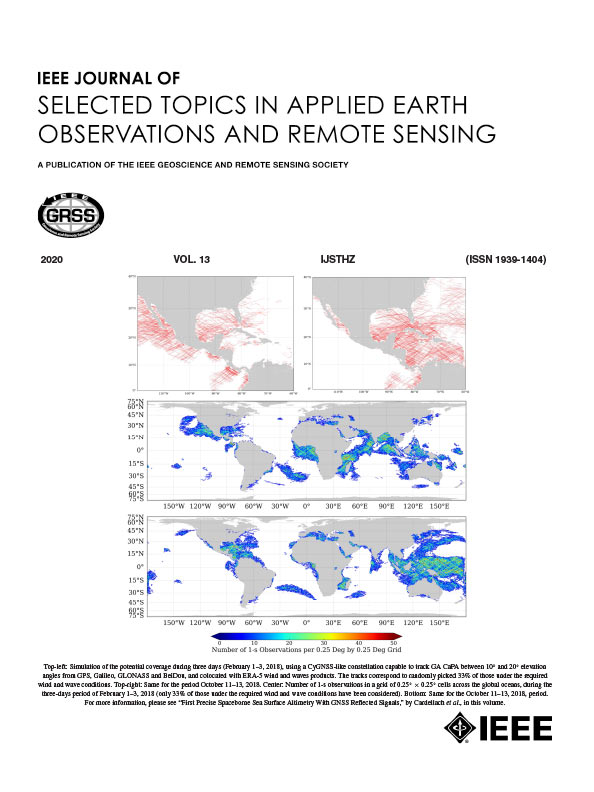Simulation of Long Time Series Spatial Distribution of PM2.5 in Beijing-Tianjin-Hebei Region Based on an Improved Machine Learning Method
IF 5.3
2区 地球科学
Q1 ENGINEERING, ELECTRICAL & ELECTRONIC
IEEE Journal of Selected Topics in Applied Earth Observations and Remote Sensing
Pub Date : 2025-08-25
DOI:10.1109/JSTARS.2025.3602240
引用次数: 0
Abstract
The Beijing-Tianjin-Hebei (BTH) region has long been facing serious fine particulate matter (PM2.5) pollution issues due to its geographical characteristics and industrial structure. In this study, we innovatively integrated STL-derived seasonal-trend parameters to replace the conventional time variables as inputs to XGBoost, combined with Bayesian optimization and hyperband (BOHB) for hyperparameter tuning. This integrated STL-XGBoost-BOHB framework significantly addressed the bottleneck of missing early monitoring data in long-term PM2.5 inversion. Through the STL time series decomposition method, seasonal trend parameters reflecting the variation of PM2.5 in the BTH region were obtained. These parameters were used as substitutes for time data, addressed the limitations of ground-based PM2.5 monitoring and overcoming the limitation of the lack of early PM2.5 monitoring data in China. The BOHB algorithm was chosen to comparison. The STL-XGBoost-BOHB model has a coefficient of determination (基于改进机器学习方法的京津冀地区PM2.5长时间序列空间分布模拟
京津冀地区由于其地理特征和产业结构,长期面临严重的细颗粒物(PM2.5)污染问题。在这项研究中,我们创新地集成了stl衍生的季节趋势参数,以取代传统的时间变量作为XGBoost的输入,并结合贝叶斯优化和超带(BOHB)进行超参数调谐。该集成的STL-XGBoost-BOHB框架显著解决了PM2.5长期反演中早期监测数据缺失的瓶颈。通过STL时间序列分解方法,得到反映BTH地区PM2.5变化的季节趋势参数。利用这些参数替代时间数据,解决了地面PM2.5监测的局限性,克服了中国缺乏早期PM2.5监测数据的局限性。选择BOHB算法进行比较。STL-XGBoost-BOHB模型的决定系数(R2)达到0.78,均方根误差为15.8 μg/m3,在PM2.5的反演中表现出优异的性能。模型结果显示PM2.5的空间分布明显,浓度由东南向西北递减。从PM2.5浓度的时间变化来看,2011 - 2020年BTH地区PM2.5浓度呈显著下降趋势。但结合基于人口数据的PM2.5污染暴露研究发现,该区域大多数人口主要集中在PM2.5浓度较高的地区,且人口加权后的PM2.5浓度显著高于未加权的原始PM2.5浓度值。这凸显了在人口密集地区进行更有针对性的污染控制的必要性。
本文章由计算机程序翻译,如有差异,请以英文原文为准。
求助全文
约1分钟内获得全文
求助全文
来源期刊
CiteScore
9.30
自引率
10.90%
发文量
563
审稿时长
4.7 months
期刊介绍:
The IEEE Journal of Selected Topics in Applied Earth Observations and Remote Sensing addresses the growing field of applications in Earth observations and remote sensing, and also provides a venue for the rapidly expanding special issues that are being sponsored by the IEEE Geosciences and Remote Sensing Society. The journal draws upon the experience of the highly successful “IEEE Transactions on Geoscience and Remote Sensing” and provide a complementary medium for the wide range of topics in applied earth observations. The ‘Applications’ areas encompasses the societal benefit areas of the Global Earth Observations Systems of Systems (GEOSS) program. Through deliberations over two years, ministers from 50 countries agreed to identify nine areas where Earth observation could positively impact the quality of life and health of their respective countries. Some of these are areas not traditionally addressed in the IEEE context. These include biodiversity, health and climate. Yet it is the skill sets of IEEE members, in areas such as observations, communications, computers, signal processing, standards and ocean engineering, that form the technical underpinnings of GEOSS. Thus, the Journal attracts a broad range of interests that serves both present members in new ways and expands the IEEE visibility into new areas.

 求助内容:
求助内容: 应助结果提醒方式:
应助结果提醒方式:


